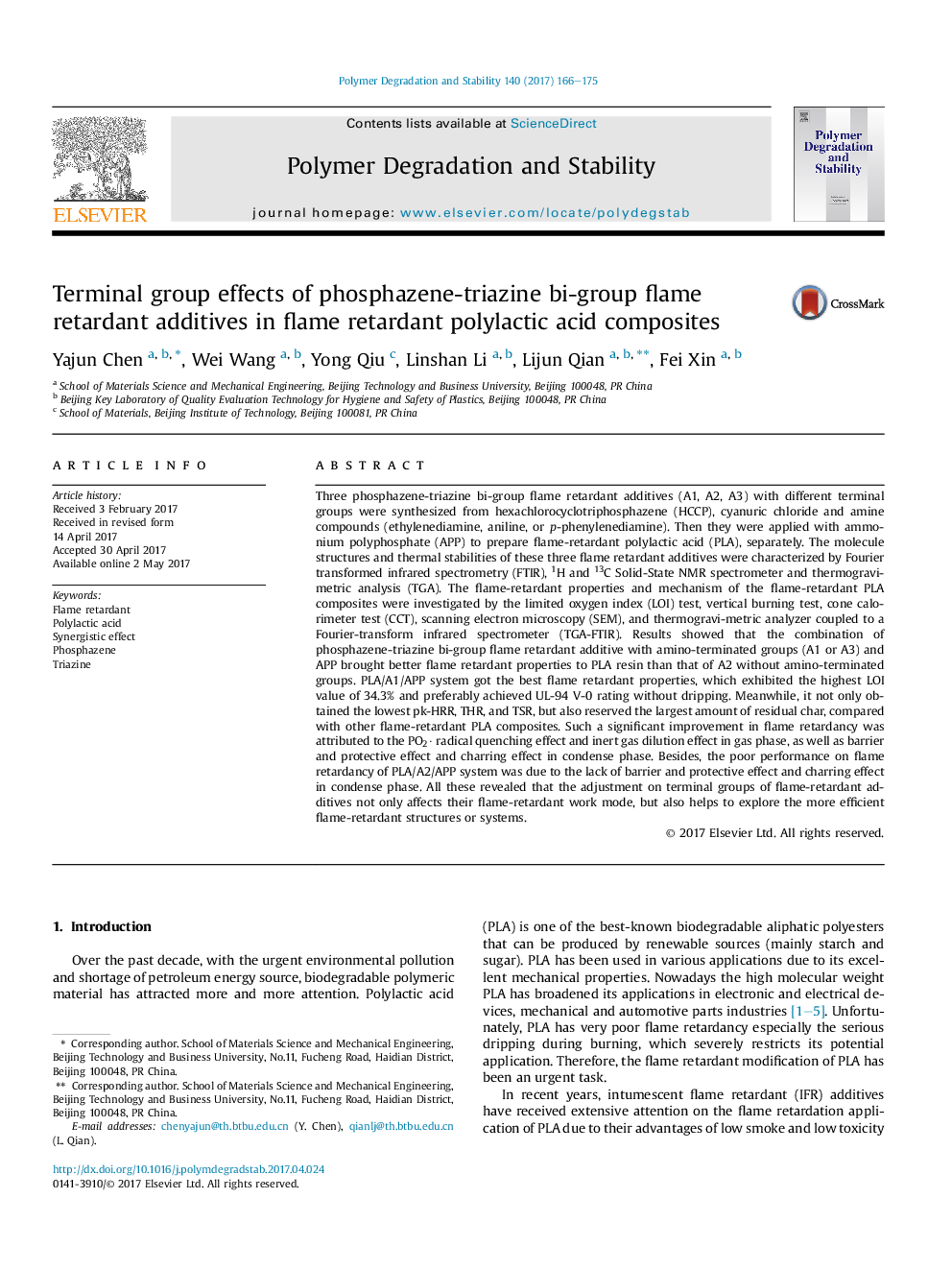| Article ID | Journal | Published Year | Pages | File Type |
|---|---|---|---|---|
| 5200796 | Polymer Degradation and Stability | 2017 | 10 Pages |
Abstract
Three phosphazene-triazine bi-group flame retardant additives (A1, A2, A3) with different terminal groups were synthesized from hexachlorocyclotriphosphazene (HCCP), cyanuric chloride and amine compounds (ethylenediamine, aniline, or p-phenylenediamine). Then they were applied with ammonium polyphosphate (APP) to prepare flame-retardant polylactic acid (PLA), separately. The molecule structures and thermal stabilities of these three flame retardant additives were characterized by Fourier transformed infrared spectrometry (FTIR), 1H and 13C Solid-State NMR spectrometer and thermogravimetric analysis (TGA). The flame-retardant properties and mechanism of the flame-retardant PLA composites were investigated by the limited oxygen index (LOI) test, vertical burning test, cone calorimeter test (CCT), scanning electron microscopy (SEM), and thermogravi-metric analyzer coupled to a Fourier-transform infrared spectrometer (TGA-FTIR). Results showed that the combination of phosphazene-triazine bi-group flame retardant additive with amino-terminated groups (A1 or A3) and APP brought better flame retardant properties to PLA resin than that of A2 without amino-terminated groups. PLA/A1/APP system got the best flame retardant properties, which exhibited the highest LOI value of 34.3% and preferably achieved UL-94 V-0 rating without dripping. Meanwhile, it not only obtained the lowest pk-HRR, THR, and TSR, but also reserved the largest amount of residual char, compared with other flame-retardant PLA composites. Such a significant improvement in flame retardancy was attributed to the PO2· radical quenching effect and inert gas dilution effect in gas phase, as well as barrier and protective effect and charring effect in condense phase. Besides, the poor performance on flame retardancy of PLA/A2/APP system was due to the lack of barrier and protective effect and charring effect in condense phase. All these revealed that the adjustment on terminal groups of flame-retardant additives not only affects their flame-retardant work mode, but also helps to explore the more efficient flame-retardant structures or systems.
Related Topics
Physical Sciences and Engineering
Chemistry
Organic Chemistry
Authors
Yajun Chen, Wei Wang, Yong Qiu, Linshan Li, Lijun Qian, Fei Xin,
